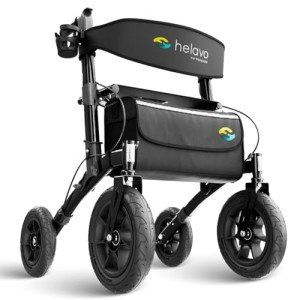Understanding Mobility Assistance: A Comprehensive Guide
In a significantly active world, mobility assistance has actually become vital for lots of people. Whether due to age, injury, or persistent health problem, mobility challenges can substantially impact life. This article dives into the various forms of mobility assistance, their benefits, and useful considerations for those looking for assistance.
What is Mobility Assistance?
Mobility assistance includes a series of services, devices, and modifications developed to assist people move safely and effectively. It aims to boost self-reliance for those with difficulties in motion, allowing them to carry out everyday activities and interact with their environments.
Kinds Of Mobility Assistance Devices
Mobility assistance devices can vary commonly, from basic to complex help. The following table lays out some typical types of mobility assistance devices, their descriptions, and appropriate usages:
| Type of Device | Description | Ideal For |
|---|---|---|
| Wheelchairs | Wheeled mobility gadgets for people with restricted walking capability. | Permanent or short-lived mobility requirements. |
| Walkers | Frames with four legs, providing support while walking. | Individuals needing a stable aid. |
| Walking canes | Lightweight sticks providing support; includes standard and quad walking canes. | Those with moderate mobility issues. |
| Crutches | Devices designed to transfer weight off the legs. | Post-surgery recovery or injuries. |
| Mobility Scooters | Motorized automobiles providing transport over brief ranges. | Those with mobility impairments. |
| Stairlifts | Motorized chairs that go up and down stairs. | Multilevel homes with stair ease of access concerns. |
| Home Modifications | Structural changes, such as ramps or broader doorways. | Enhancing home availability for wheelchairs or walkers. |
| Transfer Aids | Devices like moving boards or lift systems for simpler transfers. | Assistance in relocating to and from chairs or beds. |
Benefits of Mobility Assistance
The significance of mobility assistance extends beyond physical motion. Here are a number of essential benefits:
- Enhanced Independence: Mobility gadgets empower users to perform day-to-day jobs separately, fostering self-sufficiency.
- Enhanced Quality of Life: By enabling greater participation in social activities, mobility assistance adds to emotional well-being and social combination.
- Security and Support: Devices like walkers and canes provide physical support, decreasing the danger of falls and injuries.
- Access to Healthcare: Mobility assistance can simplify transport to medical consultations, guaranteeing users receive vital care.
- Modification Options: Many mobility gadgets can be customized to suit private requirements and preferences, ensuring comfort and functionality.
Typical Mobility Assistance Challenges
While mobility assistance can pave the way for greater self-reliance and improved quality of life, numerous challenges may arise. A few of the common problems consist of:
- Cost: Mobility gadgets can be pricey, and insurance coverage may vary substantially.
- Training and Familiarization: Learning to utilize brand-new gadgets properly might require time and assistance.
- Accessibility Issues: Not all environments are equipped to accommodate mobility gadgets, resulting in possible barriers.
- Preconception: Social stigma around making use of mobility help can impact self-confidence for some individuals.
Supplying and Receiving Mobility Assistance
To make sure the most reliable assistance, it is essential for both companies and recipients of mobility aid to consider several factors:
- Assessment of Needs: An extensive assessment by a healthcare professional can determine the particular type of assistance required.
- Trial Period: Trying out devices can help people discover the one most fit to their way of life and choices.
- Regular Maintenance: Maintenance of mobility devices ensures sturdiness and security.
- Education: Providing training on the correct use of mobility help is important for taking full advantage of benefits.
Mobility Assistance FAQs
Q1: What types of mobility aids are available?A: Common mobility help include wheelchairs, walkers, canes, crutches, and scooters, amongst others. Each device is developed to satisfy specific requirements and choices.
Q2: Where can I acquire mobility assistance devices?A: Mobility devices can be gotten from medical supply stores, online retailers, or through healthcare company suggestions.
Q3: Will my insurance coverage cover mobility assistance devices?A: Many insurance coverage strategies offer partial protection for mobility aids, however coverage can differ based on the policy. It's recommended to contact the insurer for specific details.
Q4: How can I adjust my home for mobility assistance?A: Home modifications like ramp setup, wider doorframes, and grab bars in restrooms can greatly enhance accessibility. Consulting with My Mobility Scooters can offer tailored solutions.
Q5: How do I pick the right mobility aid for me or a loved one?A: Assess the individual's mobility requirements, weight capability, and lifestyle. Trying different gadgets can also assist in picking the one that feels most comfortable and functional.
Mobility assistance plays a crucial function in boosting the independence, safety, and lifestyle for people dealing with mobility challenges. From basic canes to complex mobility scooters and home modifications, a range of choices exist to meet special requirements. As society continues to recognize the value of availability, the integration of mobility assistance solutions into life will enhance, ensuring that everyone has the opportunity to lead a fulfilling and active way of life.
By comprehending the readily available choices and advantages, people and their families can make informed choices that support their mobility needs.

